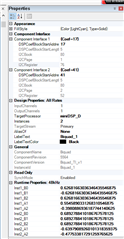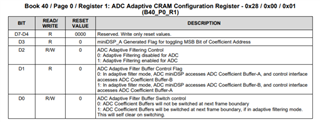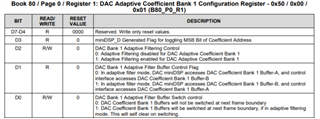Dear TI Professional,
Okay. I now have my coefficients and they are looking pretty good. Now, it is time to do the upload. I have been reading the document, SLAA447, and this has been very helpful. When using PPS, it tells me my first BiQuad instance coefficients are loaded at location Book 80 (0x50), Page 1 (0x01, and beginning Register 76 (0x4C). First of all, looking at PPS (see image below), the digits appear to be in 3.23 format. SLAA447 says it should be a 1.15 data format. Secondly, the data in the register settings does not appear to match the Inst1_B0..Inst1A2 values as shown in PPS. Is this because the data we are setting are N0, N1, N2, D1, and D2 instead?
One more question. Is this the basic sequence necessary to read these values:
w 30 00 00
w 30 7F 50
w 30 00 01
r 30 4C (returns the value of N0, MSB)
r 30 4D (returns the value of N0, LSB)
...
Thank you for your assistance.
Phil






